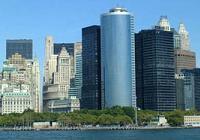New York City began in the early 17th century as a Dutch settlement known as New Amsterdam, established on the southern tip of Manhattan. Positioned on a natural harbor where the Hudson River meets the Atlantic, it quickly became a hub for trade and commerce. In 1664, the British seized control, renaming it New York in honor of the Duke of York. From these beginnings, the city developed as a crossroads of cultures, goods, and ideas, setting the stage for its future as a world capital.
During the 18th century, New York played a pivotal role in the American Revolution. Its harbor made it a target for British occupation, and the city was transformed into the crown’s command center during much of the war. After independence, New York briefly served as the first capital of the United States, hosting George Washington’s inauguration in 1789. This early role in the nation’s political life established the city as more than a commercial port—it was also a place of historic milestones.
The 19th century brought waves of immigration that reshaped New York forever. Millions arrived through Ellis Island, seeking freedom and opportunity. Irish, Italian, Polish, German, and later Jewish and Eastern European communities built vibrant neighborhoods across the city. At the same time, engineering feats like the Brooklyn Bridge and the construction of Central Park redefined urban life. Industry, shipping, and finance flourished, making New York the nation’s economic powerhouse by the late 1800s.
The 20th century confirmed New York City’s place on the global stage. The Harlem Renaissance made it a cultural epicenter, Wall Street became the financial capital of the world, and new skyscrapers like the Empire State Building symbolized ambition and progress. The city weathered challenges such as the Great Depression, postwar struggles, and fiscal crises, yet it continually reinvented itself. The establishment of the United Nations headquarters in 1945 made New York the world’s meeting ground for diplomacy.
Today, New York City remains a symbol of resilience and diversity. It has faced tragedies such as the September 11 attacks, yet each time it has rebuilt stronger, reaffirming its spirit. With over eight million residents and hundreds of languages spoken, it stands as a living mosaic of cultures. From Wall Street to Broadway, from historic landmarks to dynamic neighborhoods, New York continues to shape global finance, culture, and innovation. Its journey from a small colonial outpost to one of the most influential cities on Earth tells the story of constant change, ambition, and survival.
The five boroughs—Manhattan, Brooklyn, Queens, The Bronx, and Staten Island—each add their own identity to the city’s character. Manhattan is the center of finance and culture, Brooklyn pulses with creativity and neighborhood pride, Queens is the most ethnically diverse county in the United States, The Bronx is the birthplace of hip-hop and home to Yankee Stadium, while Staten Island offers quieter communities and natural escapes. Together, they form a city greater than the sum of its parts.
New York has always been a city of innovation. Its subway system, one of the largest in the world, transformed mobility for millions. The skyline, once dominated by brick and stone, gave way to steel and glass towers that continue to push architectural boundaries. From pioneering medical research to leading universities, the city fuels discovery and progress across countless fields. This relentless drive has kept it at the forefront of global influence for generations.
Looking to the future, New York City continues to evolve while honoring its past. Investments in sustainability, green spaces, and technology aim to prepare it for the challenges of the 21st century. Yet what defines New York is not just its infrastructure but the determination of its people. Immigrants, dreamers, and innovators still arrive each day, chasing opportunity. That enduring spirit ensures that the city’s story—spanning from a small Dutch colony to a global metropolis—will keep unfolding for centuries to come.
New York City’s influence on arts and entertainment is unmatched. Broadway remains the pinnacle of live theater, drawing audiences from across the world, while its music scene has launched countless genres and stars. From jazz clubs in Harlem to hip-hop in The Bronx, the city’s soundtracks have defined generations. Museums like the Metropolitan Museum of Art and the Museum of Modern Art preserve centuries of human creativity, while smaller galleries and performance spaces nurture the next wave of talent. In every neighborhood, creativity thrives, making New York a cultural capital without rival.
Beyond its landmarks and cultural institutions, New York is a city of daily life and constant motion. Its neighborhoods each offer unique experiences, from the bustling energy of Times Square to the quiet streets of Staten Island. Street vendors, small businesses, and global corporations coexist in the same blocks, contributing to the city’s endless variety. Whether it is a morning commute on the subway, a walk through Central Park, or a late-night meal in Chinatown, the everyday rhythm of New York reflects its identity as a city that never sleeps and never stops evolving.

